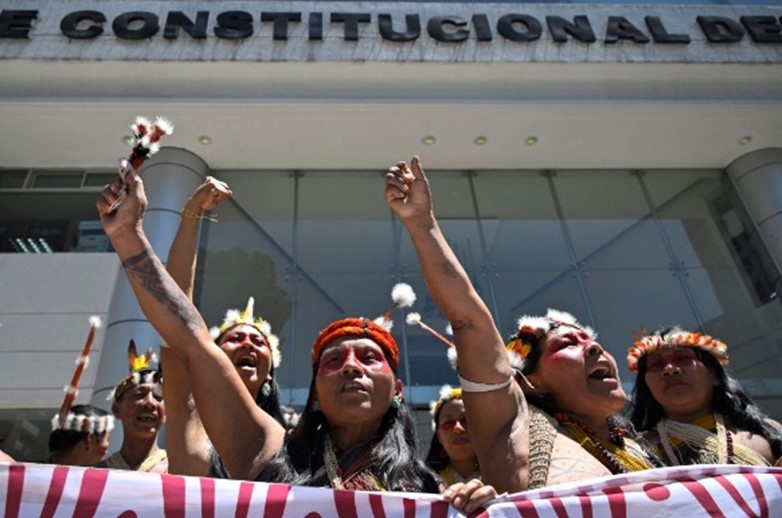
Behind the Scenes: The Complexities of Using Direct Democracy to Halt Oil Drilling in Ecuador
In 2023, Ecuador made international headlines when over 10 million citizens voted to halt oil extraction in a portion of the Amazon rainforest, marking a historic moment for environmental conservation and Indigenous rights. The referendum called for ending operations in the Ishpingo, Tambococha, and Tiputini (ITT) oil fields, which are located in the northeastern section of Yasuni National Park, one of the most biodiverse regions on Earth. This decision, celebrated by environmentalists, effectively aims to leave over 700 million barrels of oil in the ground, protecting the habitats of endangered species like jaguars, harpy eagles, and giant otters.
However, the implications of this decision go far beyond the environmental benefits. The Yasuni region is also home to the Indigenous Waorani communities, who have historically been marginalized in the decision-making processes related to oil extraction on their lands. Many of these communities have not seen significant financial benefits from the operations, which have largely proceeded without their full consent. The 2023 referendum was groundbreaking not only because it addressed climate change but also because it was the first time direct democracy was used to halt fossil fuel operations.
One year after the referendum, the Ecuadorian government announced that dismantling oil operations in the ITT fields and restoring the affected areas would take until 2032. This revelation sparked concerns about whether the government would fully honor the results of the vote. Indigenous Waorani groups, who have long fought against oil extraction, are now demanding a seat at the table in the planning process for how the phaseout will unfold. Their concern extends beyond just the ITT fields, as dozens of other oil fields continue to operate in Yasuni National Park.
Katie Surma, a journalist with extensive experience reporting on Ecuador's oil and environmental issues, has been following the situation closely. She explains that the Waorani people's struggle with oil companies dates back to the 1970s, when the U.S. oil giant Texaco, working with American missionaries, forcibly displaced Waorani families from their ancestral lands to exploit the region's oil reserves. Since then, the oil industry has continued to expand deeper into Waorani territories, often without any redress for the human rights violations that occurred during Texaco's operations.
Surma's deep reporting has illuminated the complexities of oil production in Ecuador, particularly as it collides with Indigenous rights and environmental conservation efforts. She notes that while the referendum was a significant victory for environmentalists, it is far from the end of the story. The Ecuadorian government's pledge to phase out oil operations in the ITT fields by 2029 is accompanied by a host of uncertainties. Indigenous communities like the Waorani are still grappling with how the government will implement this promise, particularly as some groups remain economically dependent on oil-related jobs and services.
For example, the Kawymeno Waorani community, which has received healthcare, education, and transportation services from oil companies, opposed the referendum. They are concerned that once oil operations cease, they may lose these essential services, which are usually provided by the government in other parts of the country. This highlights the complex relationship between oil extraction and local communities, many of which rely on oil companies for basic needs due to a lack of government support.
Beyond the immediate consequences of the ITT oil field phaseout, Surma's reporting also reveals fears that Ecuador will ramp up oil extraction in other parts of the Amazon to compensate for the lost revenue from ITT. Waorani leader Penti Baihua expressed concerns that the government may expand drilling into other oil blocks, such as Block 86, which is south of Yasuni National Park. These areas are also inhabited by Indigenous groups, including uncontacted Waorani families, whose lives could be severely impacted by further oil operations.
The government's recent announcement to begin capping over 200 oil wells in the ITT fields is seen as a step forward, but the timeline for full restoration of the area stretches until 2032. This long process has left many environmentalists and Indigenous leaders skeptical about whether the government will truly follow through on its promises. Meanwhile, six other active oil blocks in Yasuni remain operational, many of which overlap with areas known to be inhabited by uncontacted Indigenous groups. This ongoing drilling poses a serious threat not only to the environment but also to the safety of these vulnerable communities